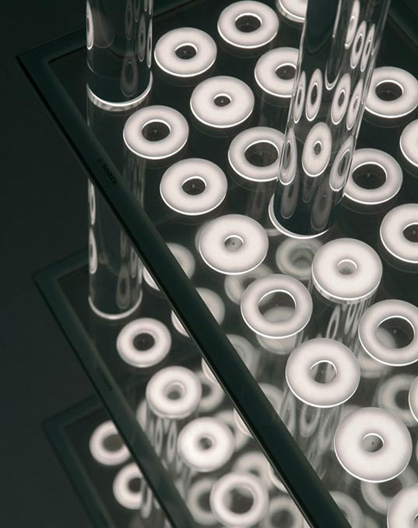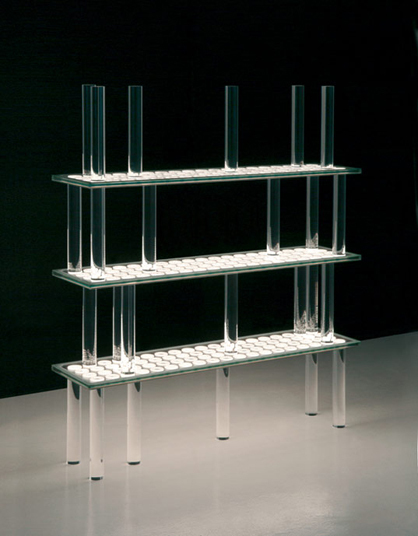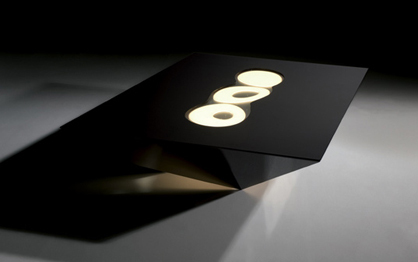Planilum
Texto por Architonic
Suiza
28.05.08
The electric light bulb has had its day. Ecological and energy-efficient illuminants such as LEDs or OLEDs are becoming more and more attractive to the consume.
The electric light bulb has had its day.
Ecological and energy-efficient illuminants such as LEDs or OLEDs are becoming more and more attractive to the consumer, and it won't be long before it will be impossible to distinguish the quality of the light they provide from the familiar pleasant glow of the conventional light bulb.
The light-emitting fields consist of serigraphed phosphores
Saazs, the studio of the designers Tomas Erel, Laurant Hey and Philippe Moyen, has now in cooperation with Saint-Gobain Innovations developed 'Planilum', a form of light-emitting glass which consists of screen-printed phosphor and a number of layers of conductive glass. Each of the 100W elements can light up an area of 40 square metres and therefore has a relative lighting power which is somewhere between that of a comparable light bulb and a neon lamp. Planilum has an effective life of 500,000 hours or about 20 years. However, Saint-Gobain intends to optimise the efficiency of this unobtrusive form of lighting by continuing its development work.
The limited edition was presented at the Salone del Mobile 2008 for the first time
At this year's Salone del Mobile in Milan Saazs presented a limited edition of tables and shelves which have been produced in cooperation with the designers Arik Levy, Christian Blecher and Adrien Gardère.









